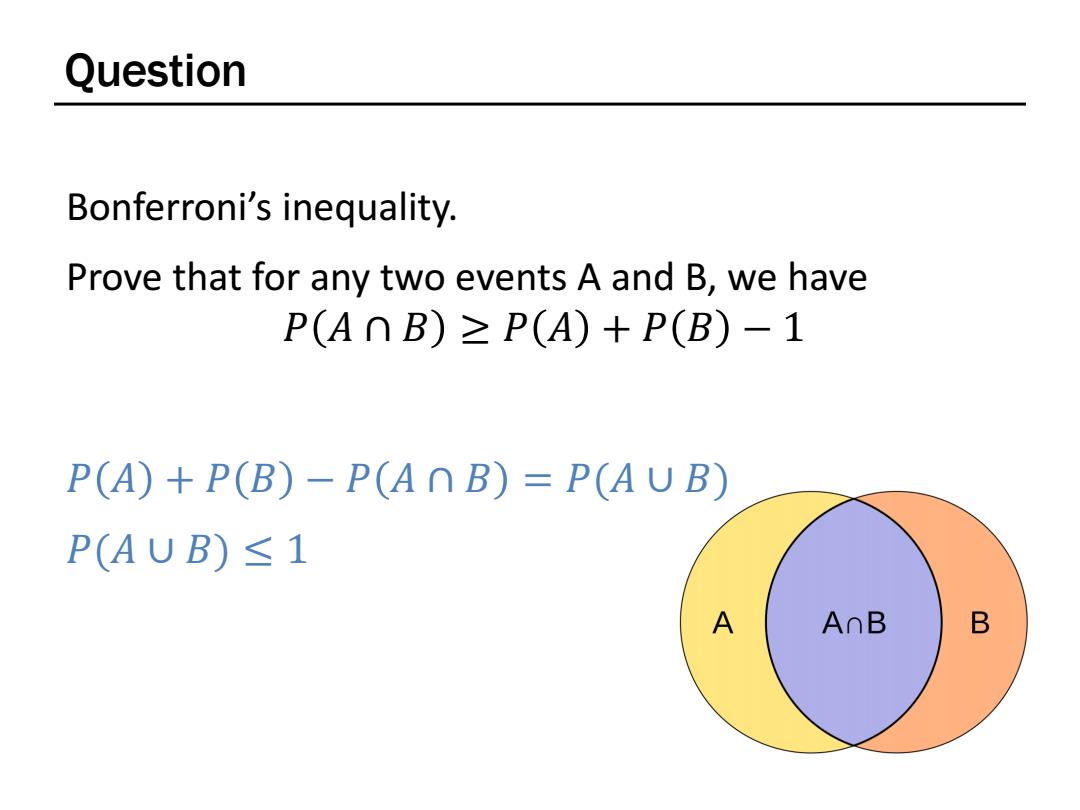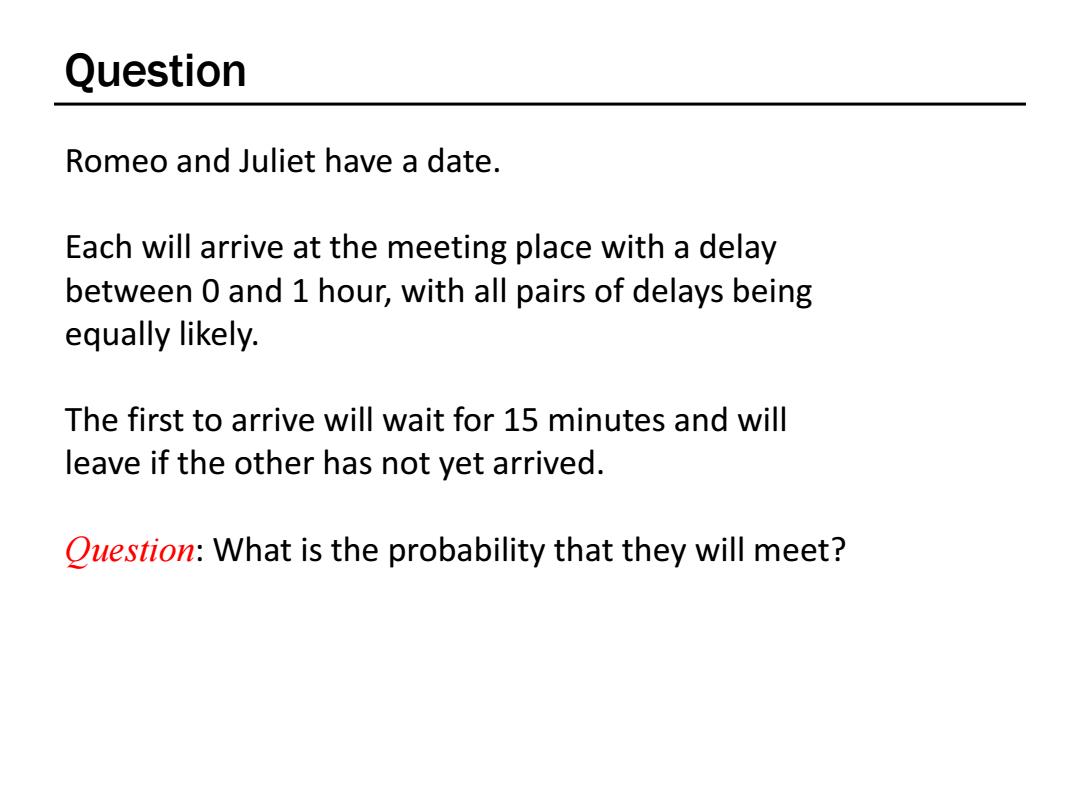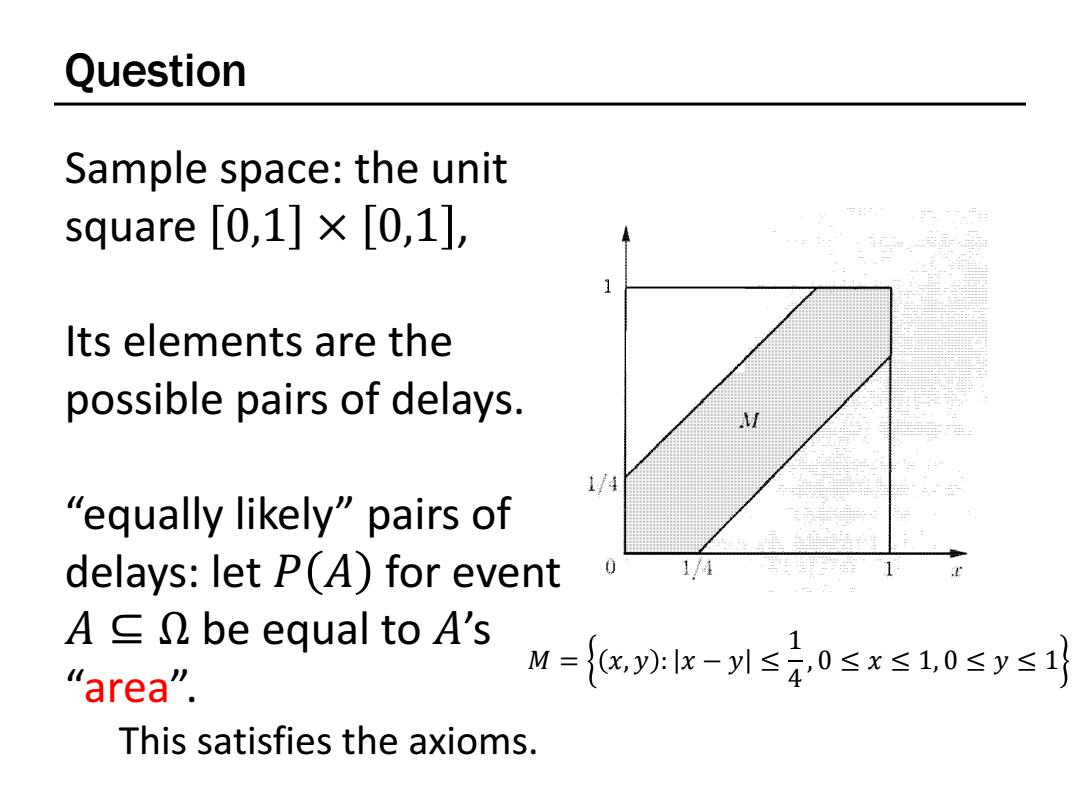
Question Bonferroni's inequality. Prove that for any two events a and B,we have P(A∩B)≥P(A)+P(B)-1 P(A)+P(B)-P(AnB)=P(AUB) P(AUB)≤1 A AnB B
Question Bonferroni’s inequality. Prove that for any two events A and B, we have 𝑃 𝐴 ∩ 𝐵 ≥ 𝑃 𝐴 + 𝑃 𝐵 − 1 𝑃 𝐴 + 𝑃 𝐵 − 𝑃 𝐴 ∩ 𝐵 = 𝑃(𝐴 ∪ 𝐵) 𝑃(𝐴 ∪ 𝐵) ≤ 1

Question Romeo and Juliet have a date. Each will arrive at the meeting place with a delay between 0 and 1 hour,with all pairs of delays being equally likely. The first to arrive will wait for 15 minutes and will leave if the other has not yet arrived. Question:What is the probability that they will meet?
Question Romeo and Juliet have a date. Each will arrive at the meeting place with a delay between 0 and 1 hour, with all pairs of delays being equally likely. The first to arrive will wait for 15 minutes and will leave if the other has not yet arrived. Question: What is the probability that they will meet?

Question Sample space:the unit square[0,1]×[0,1], Its elements are the possible pairs of delays. 1/4 “equally likely”pairs of delays:let P(A)for event 0 1/4 A∈几be equal to A's=kzmk-ns0sx≤10sy= “area”. This satisfies the axioms
Question Sample space: the unit square 0,1 × 0,1 , Its elements are the possible pairs of delays. “equally likely” pairs of delays: let 𝑃 𝐴 for event 𝐴 ⊆ Ω be equal to 𝐴’s “area”. This satisfies the axioms. 𝑀 = 𝑥, 𝑦 : 𝑥 − 𝑦 ≤ 1 4 , 0 ≤ 𝑥 ≤ 1, 0 ≤ 𝑦 ≤ 1